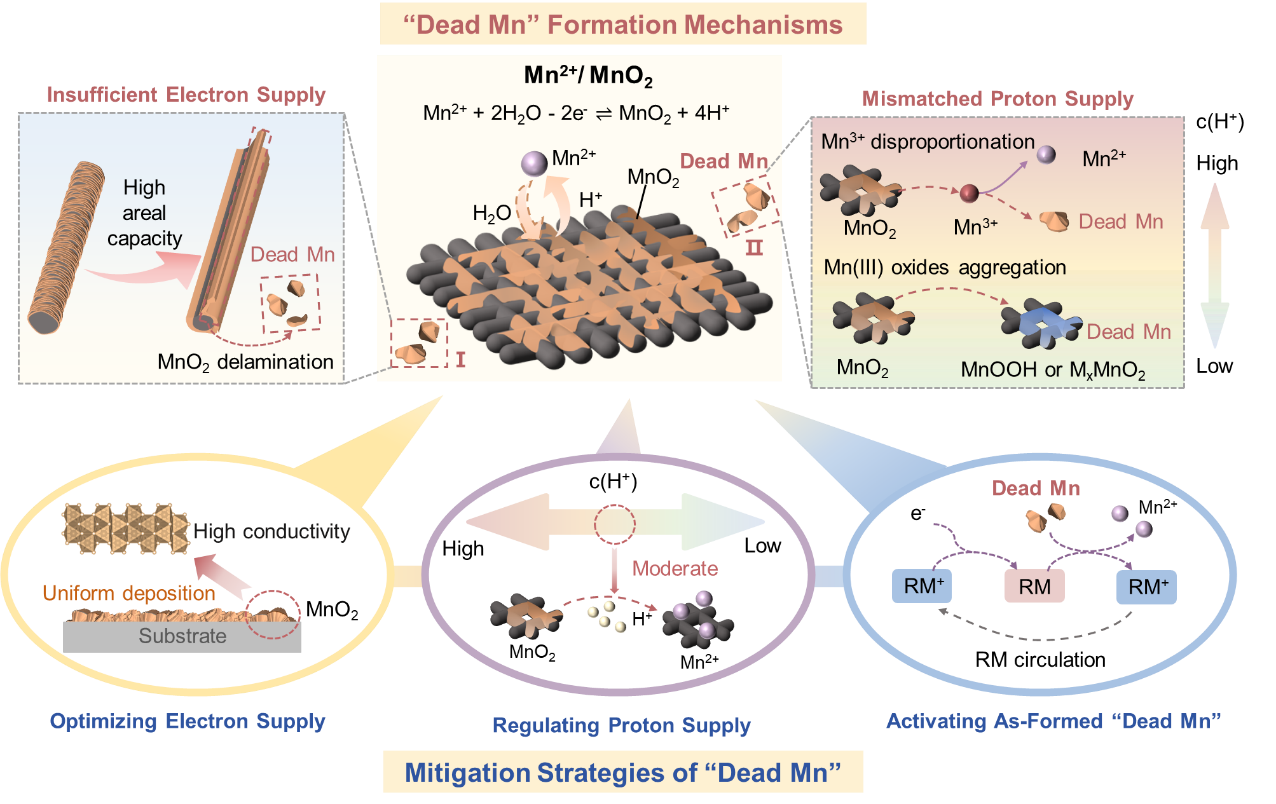K. Xie †, P.H. Zhu †, D.L. Han *, B. Zhang, X. Wang, Z.-S. Wu *, Z. Weng *, Q.-H. Yang
Energy Materials and Devices, 2025, accepted.

Manganese dioxide (MnO2), based on a two-electron-transfer deposition/dissolution chemistry, features an ultrahigh theoretical capacity (616 mAh g−1), a favorable redox potential (1.23 V vs. the standard hydrogen electrode), inherent non-toxicity and low cost, rendering it a promising cathode candidate for high-energy aqueous batteries. However, its practical application is hampered by limited electrochemical reversibility and cycling stability, primarily attributed to the formation and accumulation of electrochemically inactive manganese (Mn) species, often termed “dead Mn”. This review provides an in-depth analysis of the “dead Mn” dilemma inherent in Mn2+/MnO2 chemistry. First, the fundamental causes of “dead Mn” — insufficient electron supply and imbalanced (insufficient or excessive) proton supply — are systematically analyzed, as it detracts active material utilization, cycle life, and energy density. Mitigation strategies are then examined from three aspects: (i) preventing “dead Mn” formation due to insufficient electron supply, (ii) mitigating “dead Mn” formation related to imbalanced proton supply, and (iii) activating and regenerating existing “dead Mn”. Finally, we envision future research directions to enhance practical viability of Mn2+/MnO2 deposition/dissolution chemistry, aiming to catalyze advancements in high-energy aqueous battery systems.